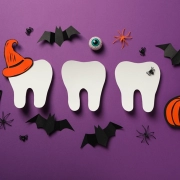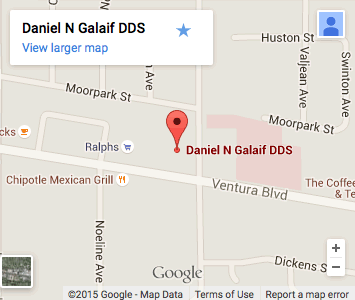Something REALLY Scary…
It’s the time of year when people dress up for Halloween, often trying to make themselves look scary and scare others. Well here is something real, that is truly scary – oral cancer:
It’s not something that you probably talk, or think about very often, but something that should be understood to hopefully avoid having to confront a very scary result…
Oral cancer appears as a growth or sore in the mouth that does not go away, including cancers of the lips, tongue, cheeks, floor of the mouth, hard and soft palate, sinuses, and pharynx (throat), and can be life threatening if not diagnosed and treated early. For more than a decade there has been an annual increase in the rate of occurrence of oral cancers. This is expected to continue to rise, as there is no national screening policy or protocol, and the risk factors for the disease continue to be relatively unchanged.
Common symptoms of oral cancer may include:
- Swellings/thickenings, lumps or bumps, rough spots/crusts/or eroded areas on the lips, gums, or other areas inside the mouth
- Development of velvety white, red, or speckled (white and red) patches in the mouth
- Unexplained bleeding in the mouth
- Unexplained numbness, loss of feeling, or pain/tenderness in any area of the face, mouth, or neck
- Persistent sores on the face, neck, or mouth that bleed easily and do not heal within a few weeks
- A soreness or feeling that something is caught in the back of the throat
- Difficulty chewing or swallowing, speaking, or moving the jaw or tongue
- Hoarseness, chronic sore throat, or change in voice
- Ear pain
- A change in the way your teeth or dentures fit together
- Dramatic weight loss
If you have any of these symptoms, contact Dr. Galaif or your health care professional without delay.
Risk factors for the development of oral cancer may include:
- Smoking. Cigarette, cigar, or pipe smokers are six times more likely than nonsmokers to develop oral cancers.
- Smokeless Tobacco. Users of dip, snuff, or chewing tobacco products are 50 times more likely to develop cancers of the cheek, gums, and lining of the lips.
- Excessive Alcohol Consumption. Oral cancers are about six times more common in drinkers than in non-drinkers.
- Family History of cancer.
- Excessive Sun Exposure, especially at a young age.
- Human papillomavirus (HPV). Certain HPV strains are etiologic risk factors for Oropharyngeal Squamous Cell Carcinoma (OSCC).
It is very important to note that more than 25% of all oral cancers occur in people who do not smoke, and who only drink alcohol occasionally.
While there is a perception that this is rare, oral cancer will be newly diagnosed in about 145 new individuals each day in the US alone, and a person dies from oral cancer every hour of every day. When found at early stages of development, oral cancers can have an 80 to 90 % survival rate. Unfortunately at this time, the majority are found as late stage cancers, which accounts for the very high death rate. Late stage diagnosis is not ocurring because most of these cancers are hard to discover, but because of a lack of public awareness, coupled with a lack of screenings which would yield early discovery by medical and dental professionals.
Tests and procedures used to diagnose mouth cancer include:
Physical exam. Your doctor or dentist will examine your lips and mouth to look for abnormalities — areas of irritation, such as sores and white patches (leukoplakia).
Removal of tissue for testing (biopsy). If a suspicious area is found, your doctor or dentist may remove a sample of cells for laboratory testing of a biopsy.
During your regular exam with us, Dr. Galaif will ask you about changes in your medical history, and whether you’ve had any new or unusual symptoms. Then Dr. Galaif will check your oral cavity, which includes your lips, cheek lining, gums, the front part of your tongue, the floor of your mouth and the roof of your mouth. Dr. Galaif will also examine your throat (pharynx) at the soft part at the roof of your mouth, including your tonsils, the back section of your tongue and where your tongue attaches to the bottom of your mouth, and then feel your jaw and neck for any lumps or abnormalities.
Early detection may result in better treatment outcomes, and may help keep you or someone you love from becoming one of the 10,000+ people whose lives may be claimed this year by oral cancer. So be aware of any physical changes you may notice, and let Dr. Galaif know about them as soon as possible. Try to maintain a healthy lifestyle, to help avoid oral health complications that could lead to potentially serious issues.
Call to make your appointment today.
(818) 789-6789
info@DrGalaif.com



